July 22-25, 2018
It was a beautiful day to drive to Seward from Homer. The air distance is only 68 miles, but the driving distance is 170 miles of fjords, bays, and mountains.
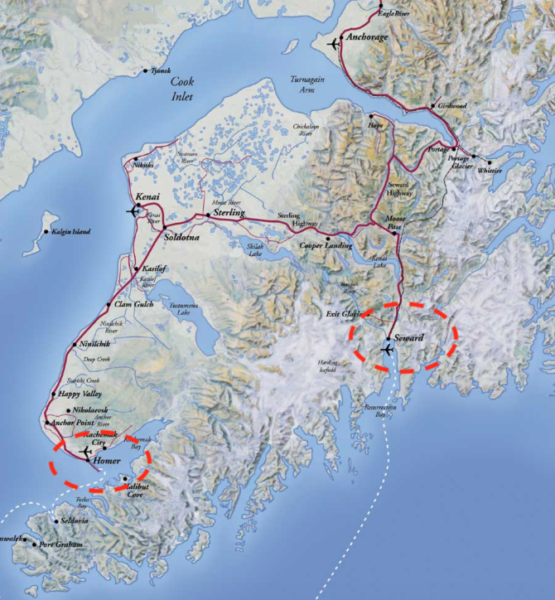
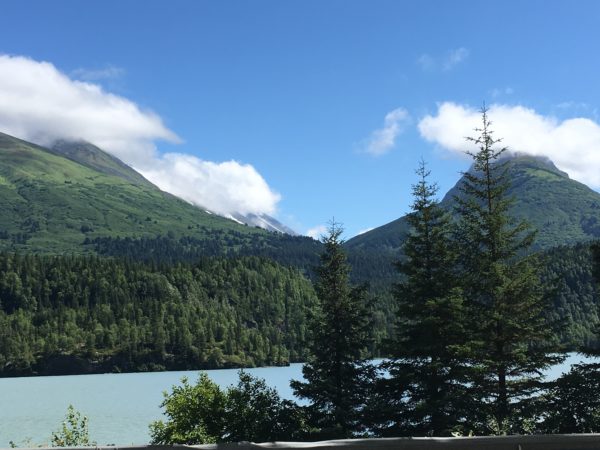
Seward is 127 miles south of Anchorage on the east coast of the Kenai Peninsula. It is bordered by the Kenai Mountains to the west, the Chugach Mountains to the east and Resurrection Bay to the south. The bay is 35 miles long and was named by Russian fur trader and explorer Alexander Baranof in 1792 when he took shelter there on Sunday of the Resurrection (Easter). The city was established in 1903 by railroad surveyors and was named for William H. Seward, the U.S. Secretary of State who arranged for the purchase of Alaska from Russia. Today it is a transportation hub for mining, exploration, fishing and trapping industries. Its population is about 2,800.
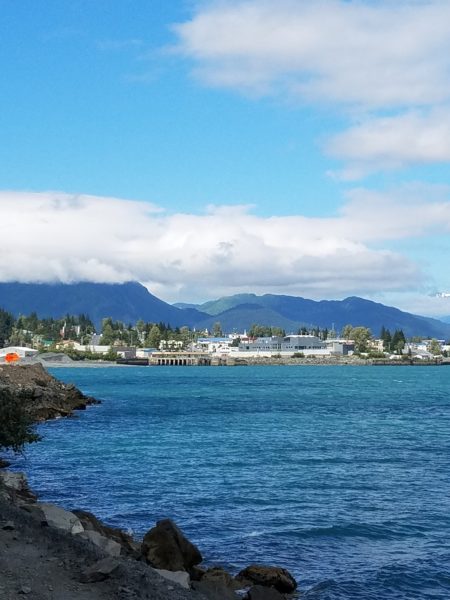
Our introduction to Seward was the last time we saw sun there. It was pretty while it lasted.
Around Town
The Seward Community Library and Museum had great exhibits on Seward’s history.
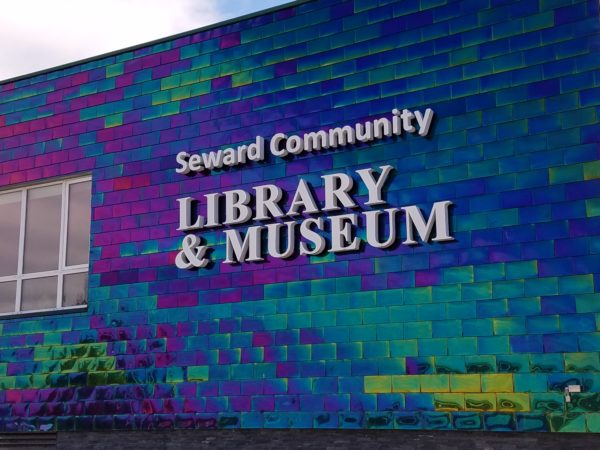
The tiles on the building are steel galvanized with a coating of aluminum, magnesium, and zinc.
Today when we hear the word “Iditarod” we think of the dog sled race, but the Iditarod was a trail established in 1910 from Seward to Rome. (Iditarod is a native word for distant.) Along its path gold was moved south to Seward and mail and supplies were moved north to the goldfields. By 1924 the trail had been replaced by air transportation.
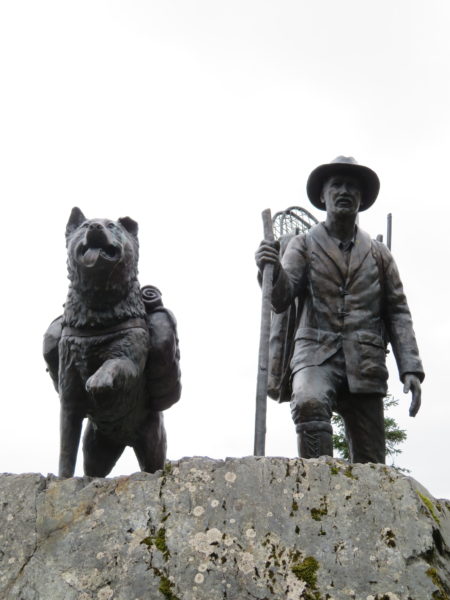
The “Trailblazers” sculpture commemorates the Iditarod Trail and the spirit of Alaska: Strong, resolute, hopeful, and confident.
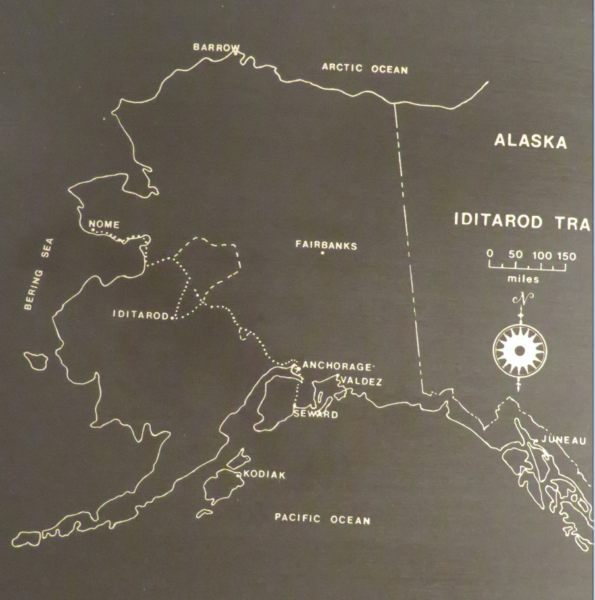
Iditarod Trail
A local resident, Dan Seavey, helped organize and raced in the first Iditarod Trail Sled Dog Race in 1973. His son Mitch has won the race three times and his grandson Dallas has won the race four times.
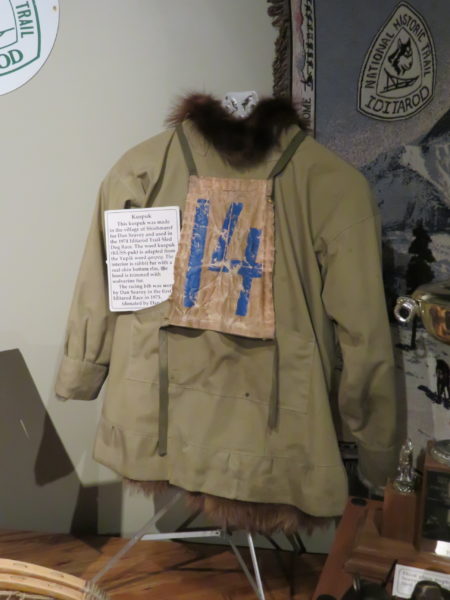
Dan Seavey wore this bib in 1973 and the kuspuk (jacket with an interior of rabbit fur, a bottom rim made of sealskin, and a hood trimmed with wolverine fur) in the race in 1974.
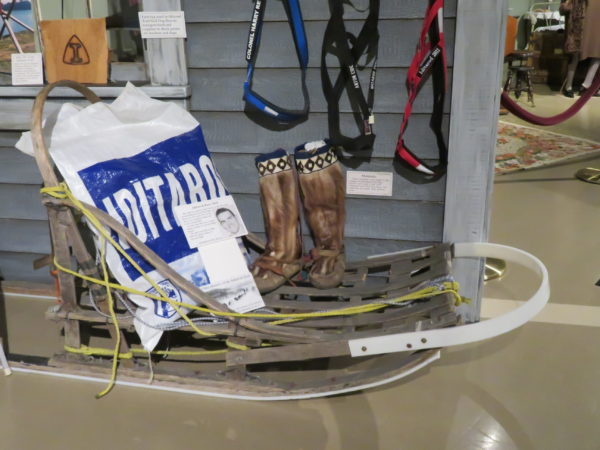
Dan Seavey’s sled
The museum had videos of eyewitnesses to the Good Friday Earthquake of March 27, 1964. Forty-five seconds after the earthquake started shaking, huge slices of the Seward waterfront and harbor slid into the bay. The Standard Oil dock facility ruptured, spewing fuel everywhere. The oil tanks overturned, exploded and caught fire. A wall of water 30 feet high was generated by a submarine landslide, became covered in burning oil, and swallowed the remaining harbor and dock areas. Forty oil-filled railroad tank cars exploded in a chain-reaction. As the first wave subsided, people made their way to higher ground, fearing tsunamis. Twenty-five minutes after the earthquake, the first tsunami hit Seward with 40-foot waves moving one hundred miles per hour. The waves were still ablaze with burning oil. The last tsunami left the town ten hours later, leaving 13 people dead and Seward devastated.
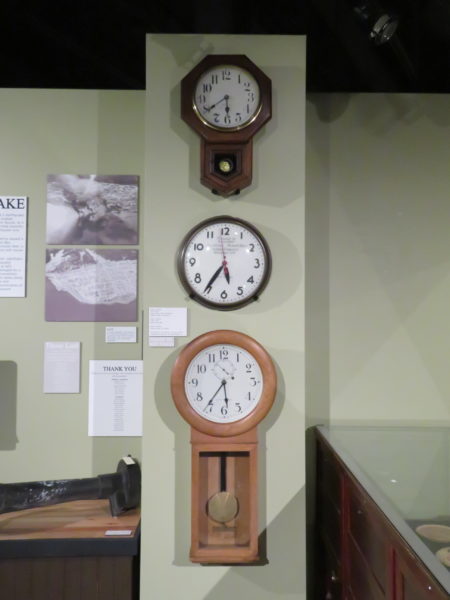
Clocks stopped when the earthquake struck.
We found good coffee at Resurrect Art, a coffeehouse and gallery.
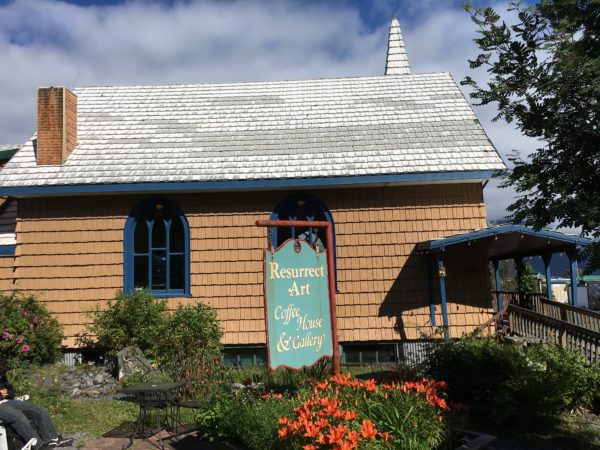
Resurrect Art is housed in a building constructed as a church in 1916.
Bear Creek Weir
Not far from our campground was a salmon stream. It was our first opportunity to see salmon on their spawning journey. We were impressed with how much effort and determination the fish exhibited. The first video shows how many salmon were in Bear Creek.
The second video shows a salmon jumping up the weir. We watched for a while and very few salmon were successfully climbing the wear. A local resident told us the weir was made high so only the strongest salmon would reproduce. Trout move upstream with the salmon hoping to feast on roe.
We watched the salmon in this video for a while. The missing flesh didn’t seem to bother it.
Alaska SeaLife Center
We spent a rainy morning at the Alaska SeaLife Center, a non-profit cold-water marine research and educational facility in Seward.
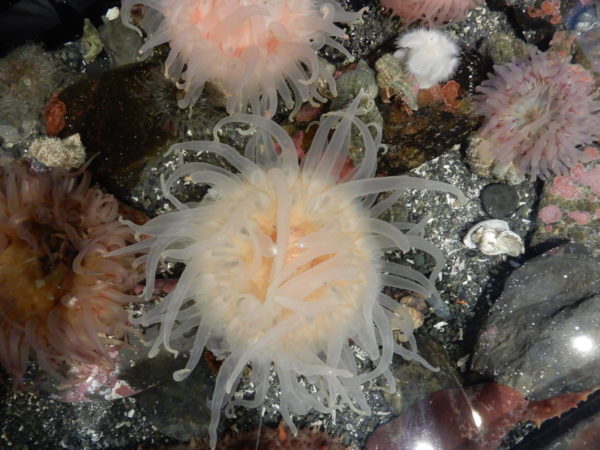
Anemone
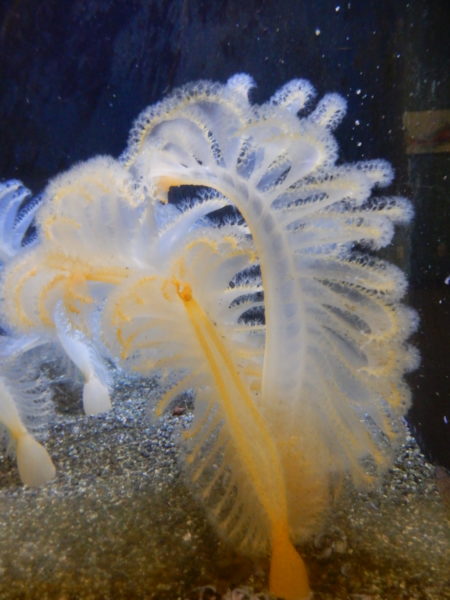
Sea pen
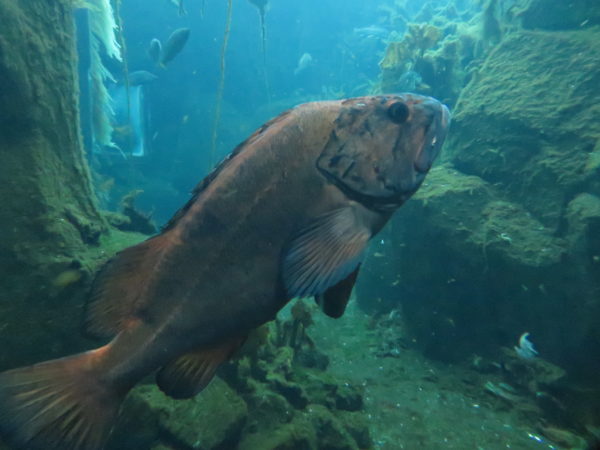
Yelloweye rockfish
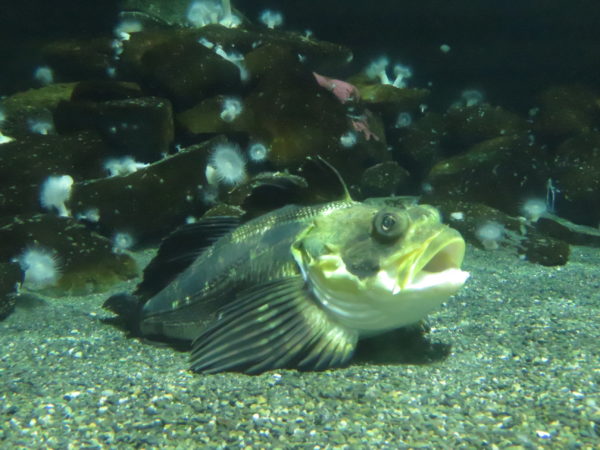
Yellow Irish Lord
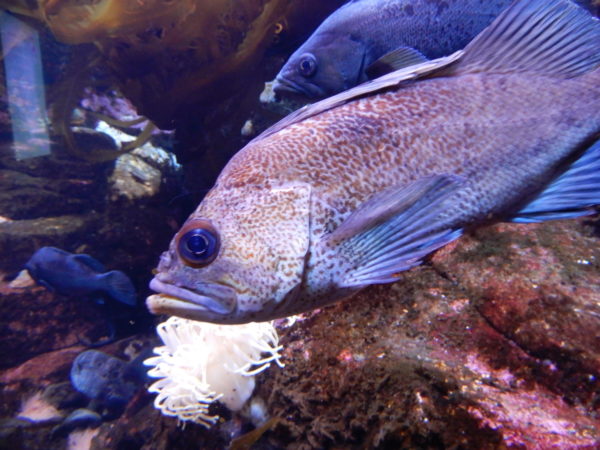
Grouper
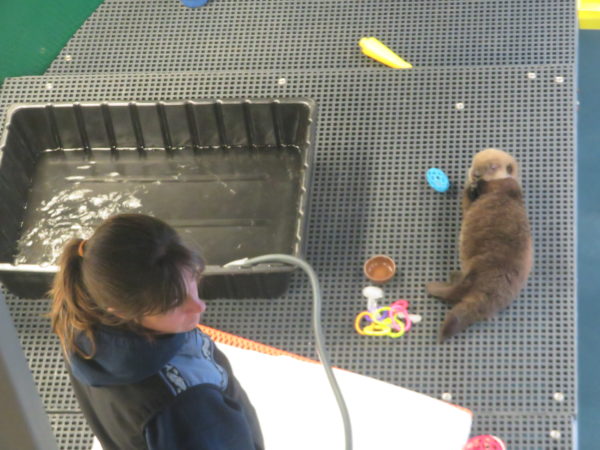
This young otter is being trained to eat in the small pool.
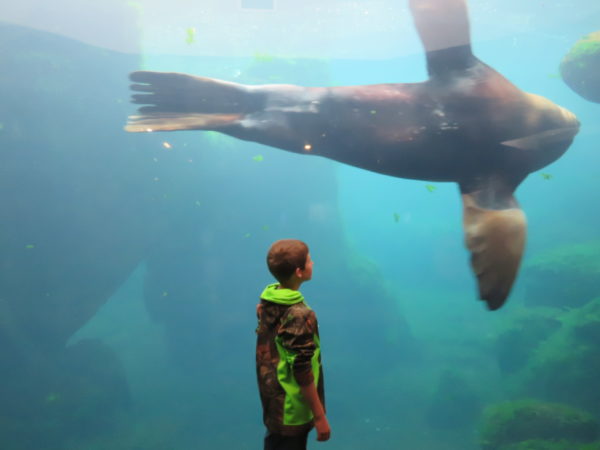
Steller sea lion
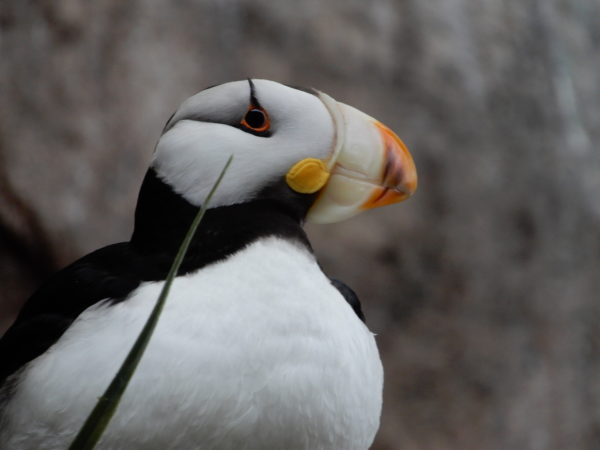
Horned puffin
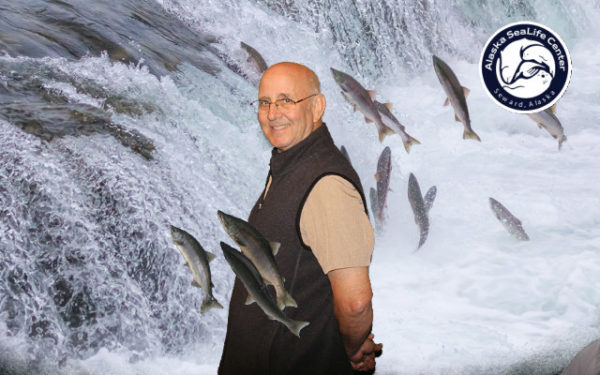
The center’s photo booth puts Dave in a salmon stream . . .
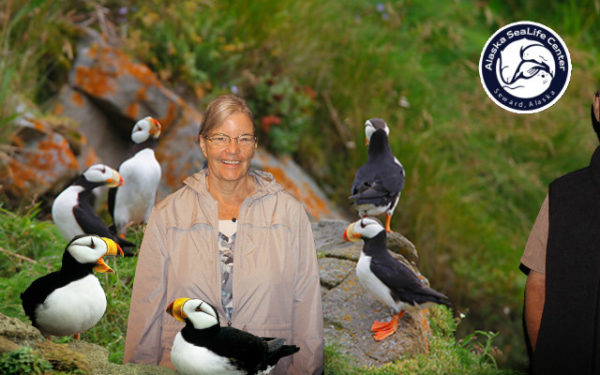
. . . and Jane in the middle of puffins
Kenai Fjords National Park: Exit Glacier
Kenai Fjords National Park is a small park by Alaska standards–about a thousand square miles, 700 square miles of which is covered by the Harding Icefield which first formed 23,000 years ago. Exit Glacier, one of 38 glaciers that flow from the icefield, was the exit for the team which made the first recorded crossing of the icefield in 1968. We joined others for a ranger-led walk along the Glacier Overlook Trail.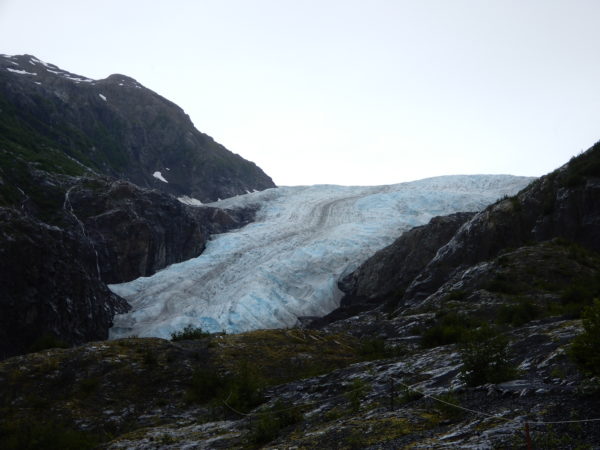
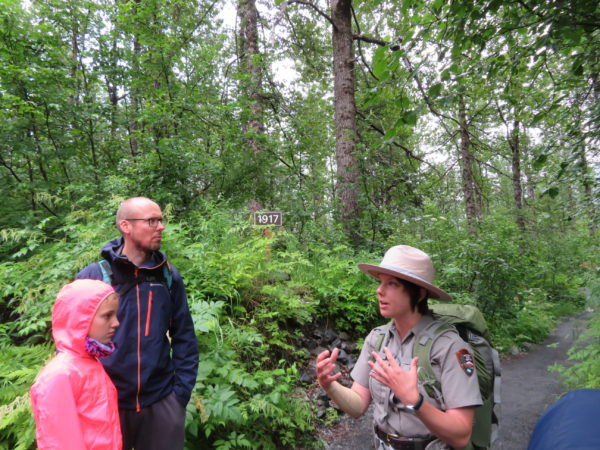
In 1917 Exit Glacier reached this point, now a young forest.
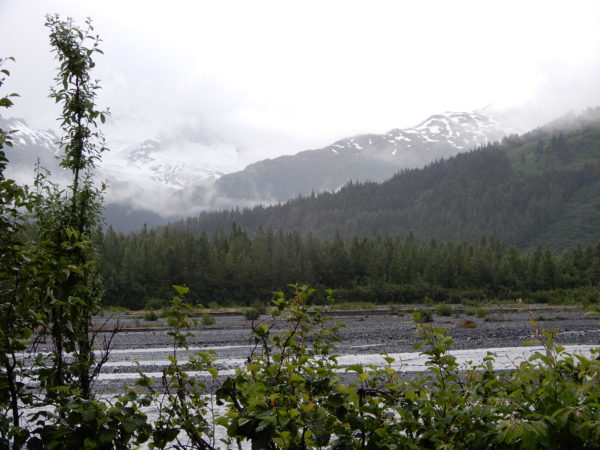
Resurrection River
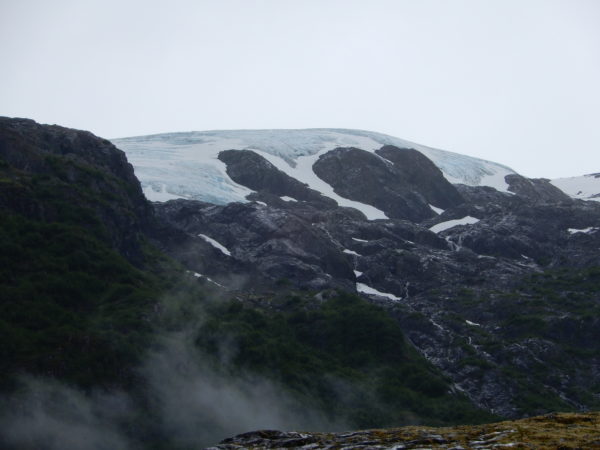
Part of the Harding Icefield

Exit Glacier
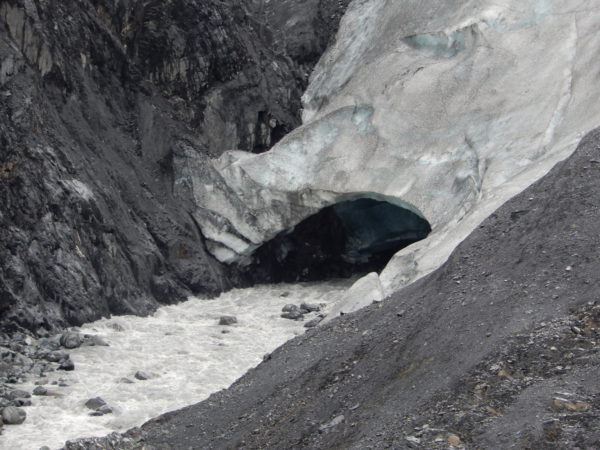
Ice caves form as melting water runs under the glacier.
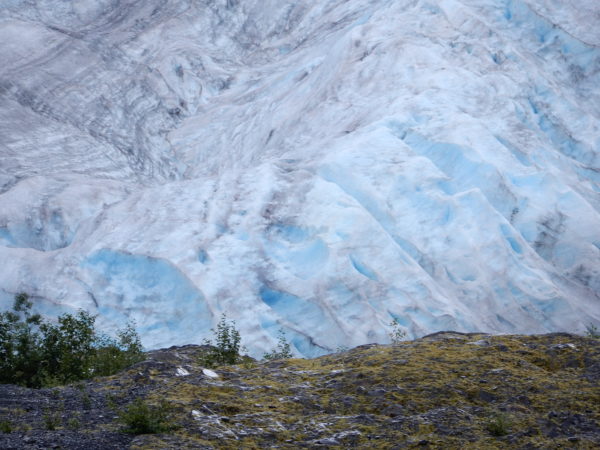
The toe of Exit Glacier
Today’s vocabulary word, courtesy of the Visitors Center, is firn. It’s snow that has survived a year without melting and has become compacted by snow above it. Firn is 50% air. In comparison, snow is 90% air and ice is 10% air.
Kenai Fjords National Park Tour with Major Marine
We got to see the national park from the water on a seven and a half-hour fjord tour with Major Marine.
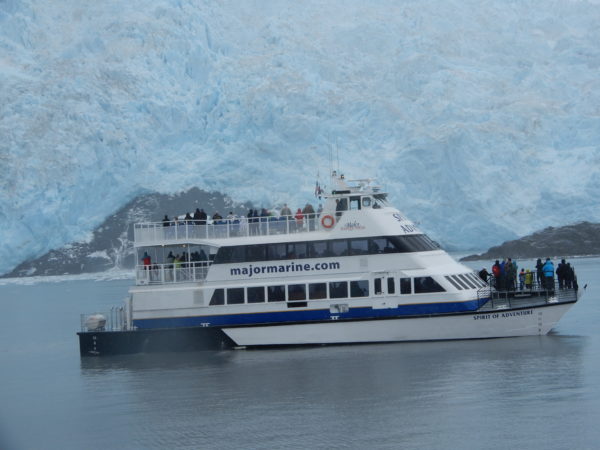
Our boat was the same model as this one.
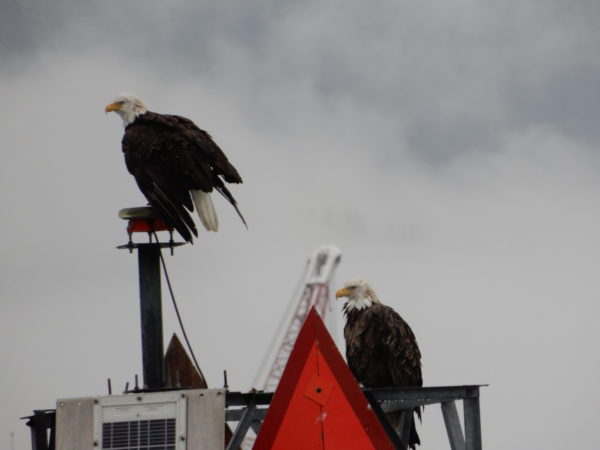
Bald eagles perched on channel markers as we left the harbor.
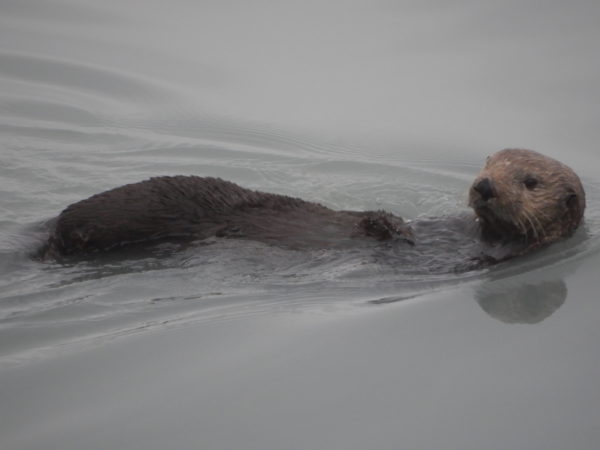
This otter was hanging around the harbor.
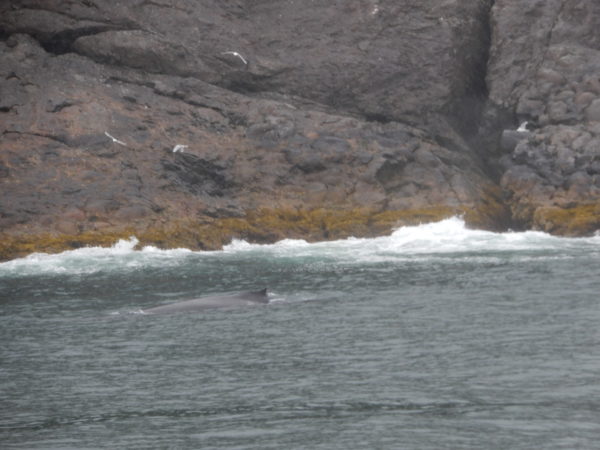
There is a humpback just under the water’s surface–we promise.
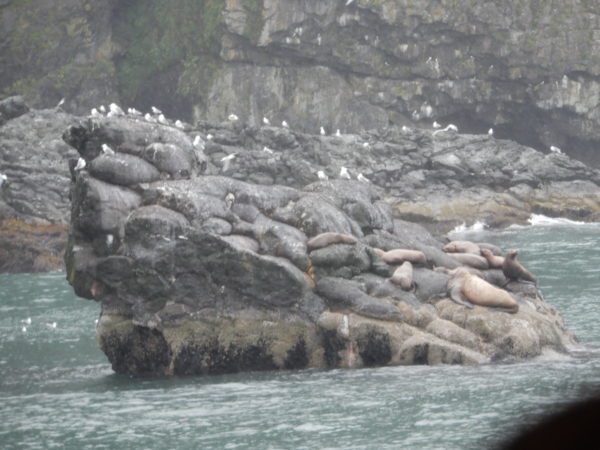
Steller sea lions
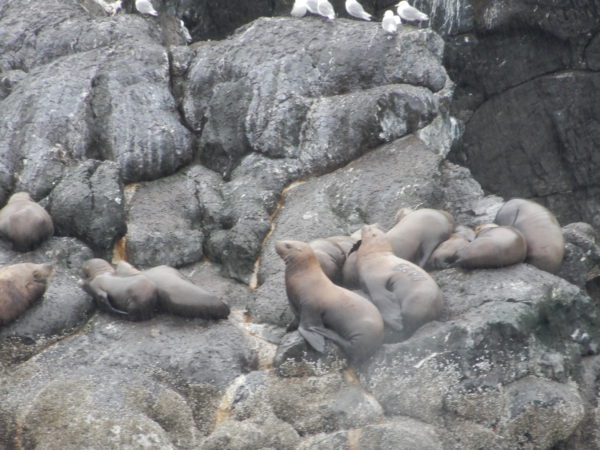
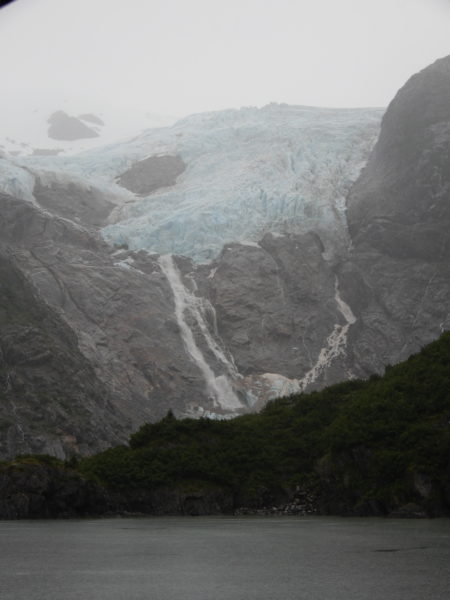
Holgate Glacier
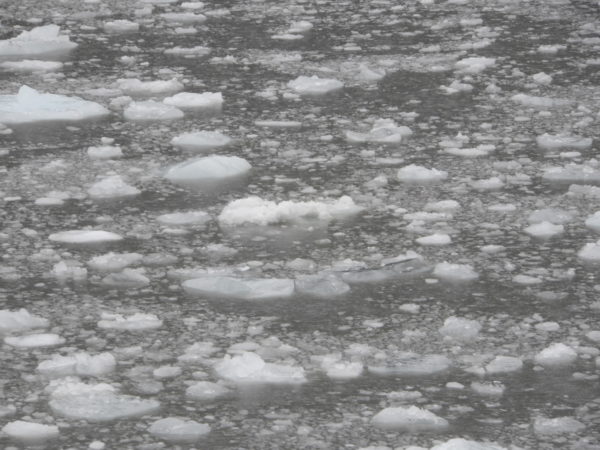
Ice in the water
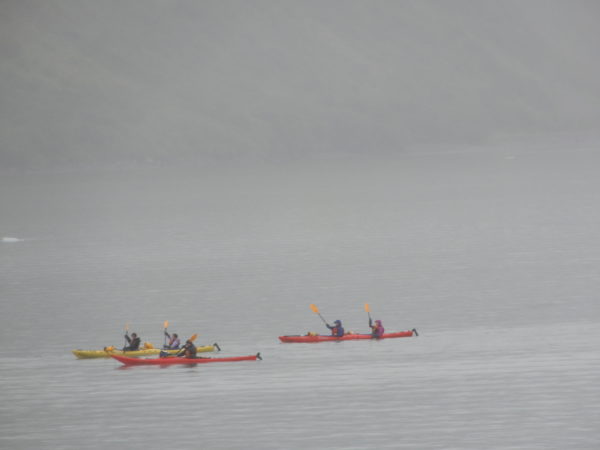
Kayakers in the water
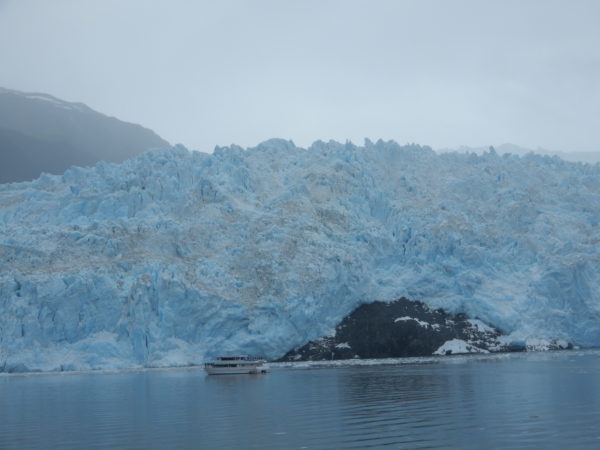
Ailik Glacier
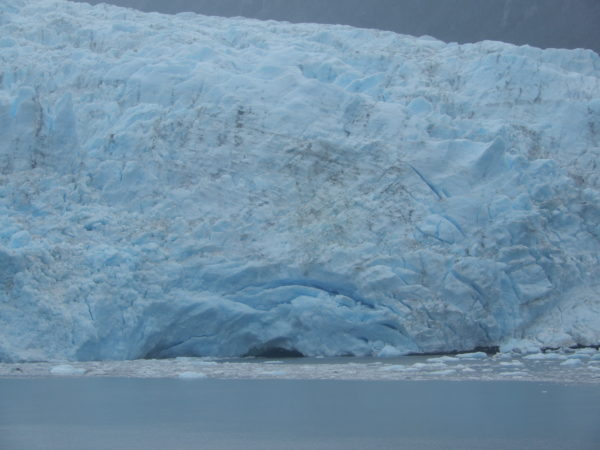
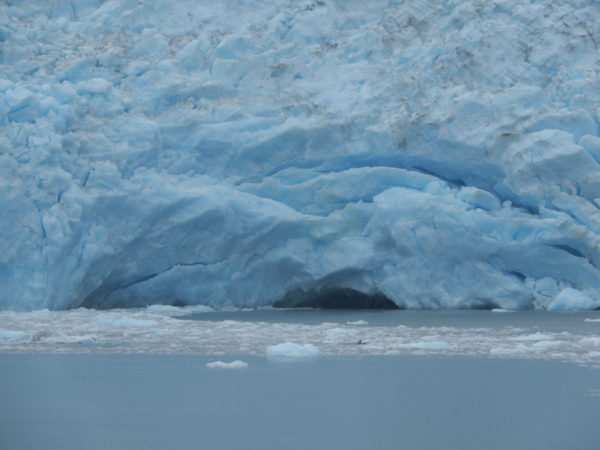
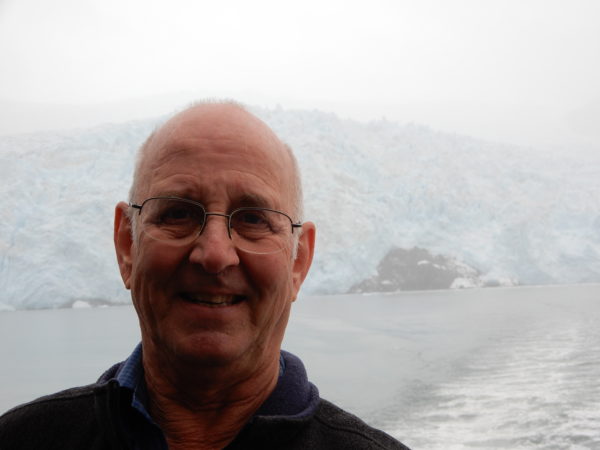
Dave at Holgate Glacier.
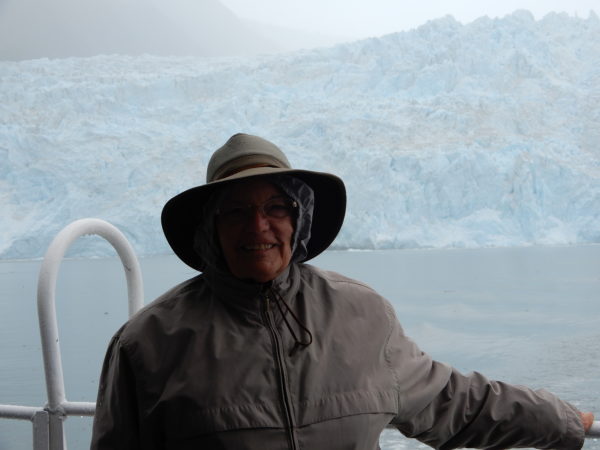
Jane spent about seven hours of the trip on the stern, in the cold and rain, being seasick. She almost managed a smile in the relatively calm waters of the fjord.
These harbor seals begged to be photographed. We wish the auto-focus had worked a little better.
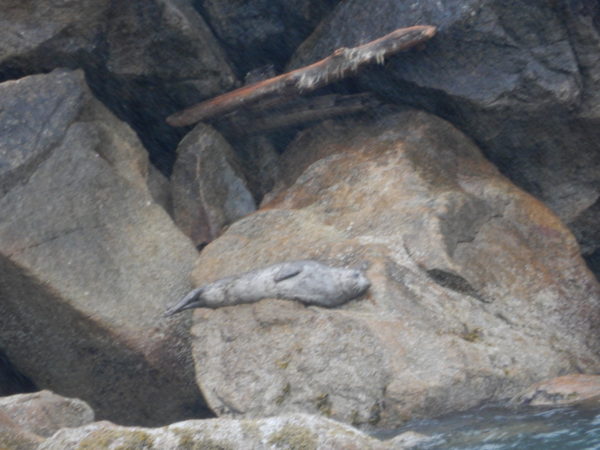
Harbor seal
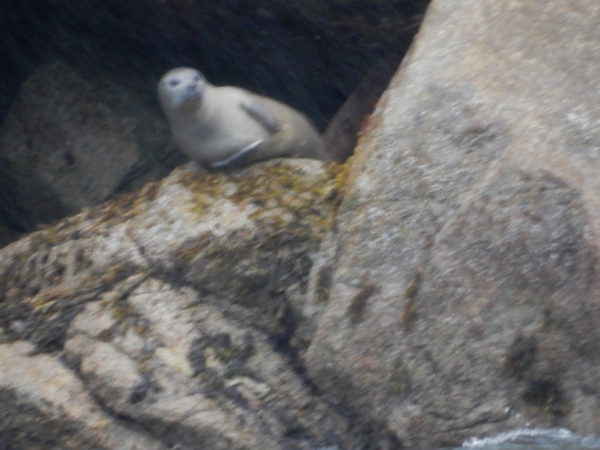
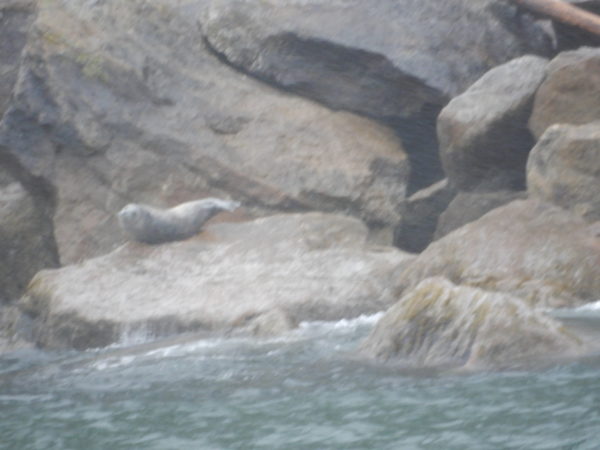
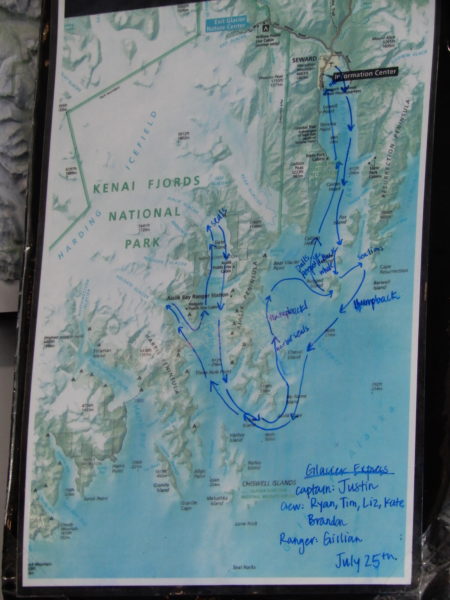
The on-board National Park ranger mapped our trip.
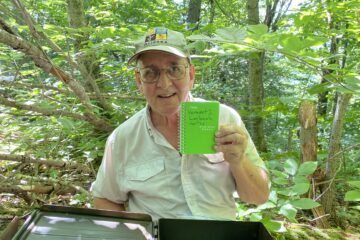
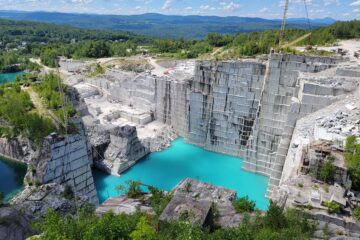
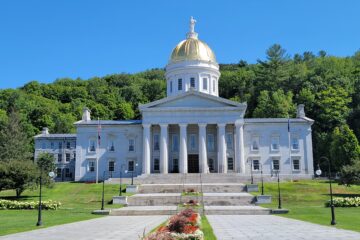
1 Comment
Susan · September 17, 2018 at 4:50 pm
Sorry you were sick for most of the boat trip.